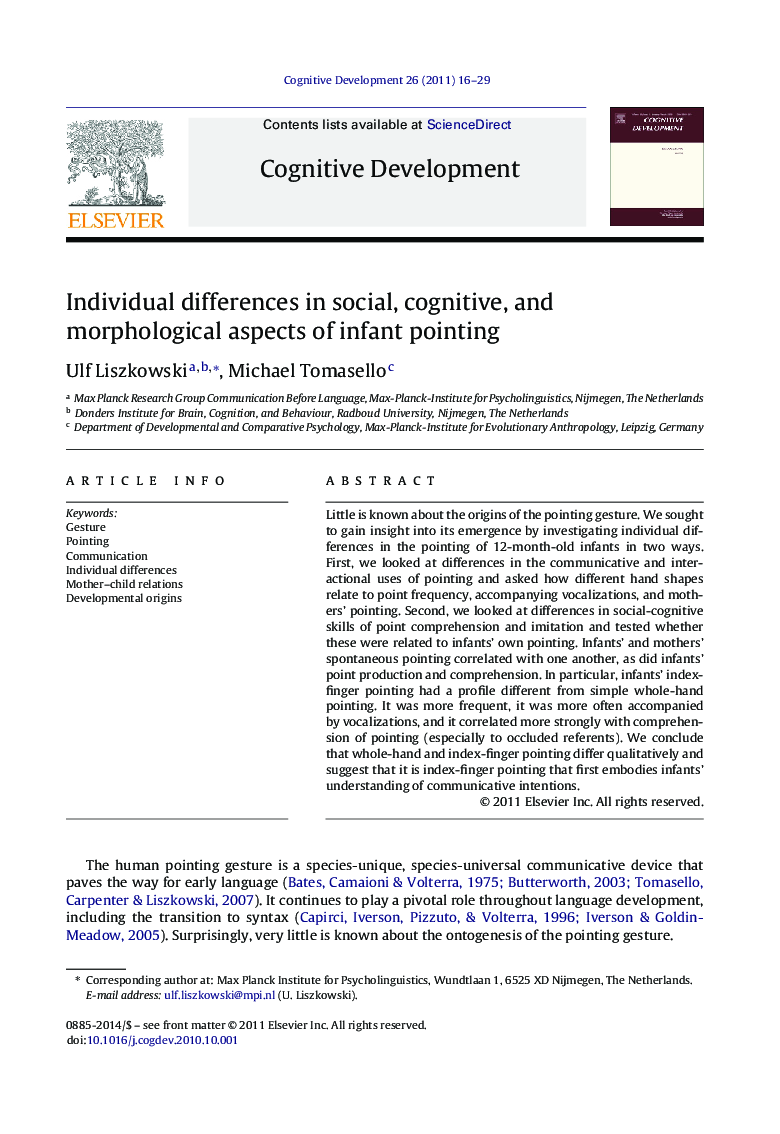| Article ID | Journal | Published Year | Pages | File Type |
|---|---|---|---|---|
| 916637 | Cognitive Development | 2011 | 14 Pages |
Little is known about the origins of the pointing gesture. We sought to gain insight into its emergence by investigating individual differences in the pointing of 12-month-old infants in two ways. First, we looked at differences in the communicative and interactional uses of pointing and asked how different hand shapes relate to point frequency, accompanying vocalizations, and mothers’ pointing. Second, we looked at differences in social-cognitive skills of point comprehension and imitation and tested whether these were related to infants’ own pointing. Infants’ and mothers’ spontaneous pointing correlated with one another, as did infants’ point production and comprehension. In particular, infants’ index-finger pointing had a profile different from simple whole-hand pointing. It was more frequent, it was more often accompanied by vocalizations, and it correlated more strongly with comprehension of pointing (especially to occluded referents). We conclude that whole-hand and index-finger pointing differ qualitatively and suggest that it is index-finger pointing that first embodies infants’ understanding of communicative intentions.
